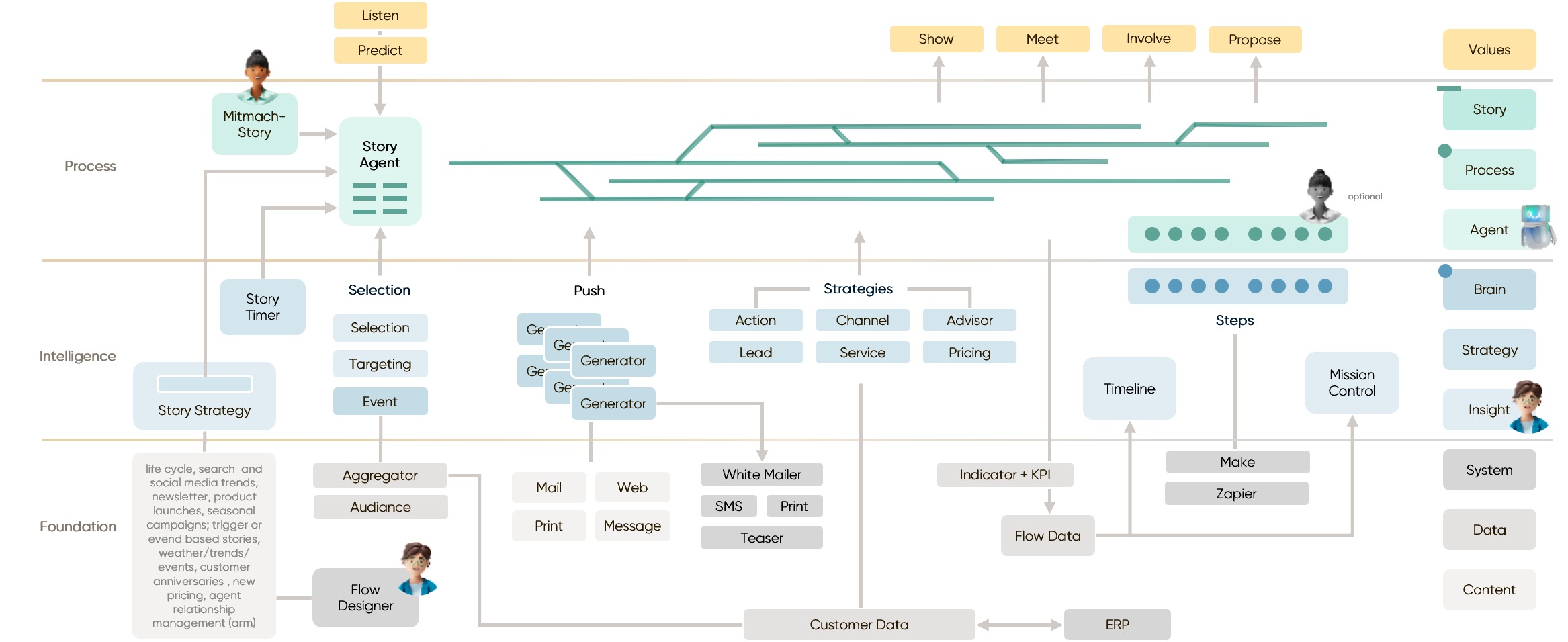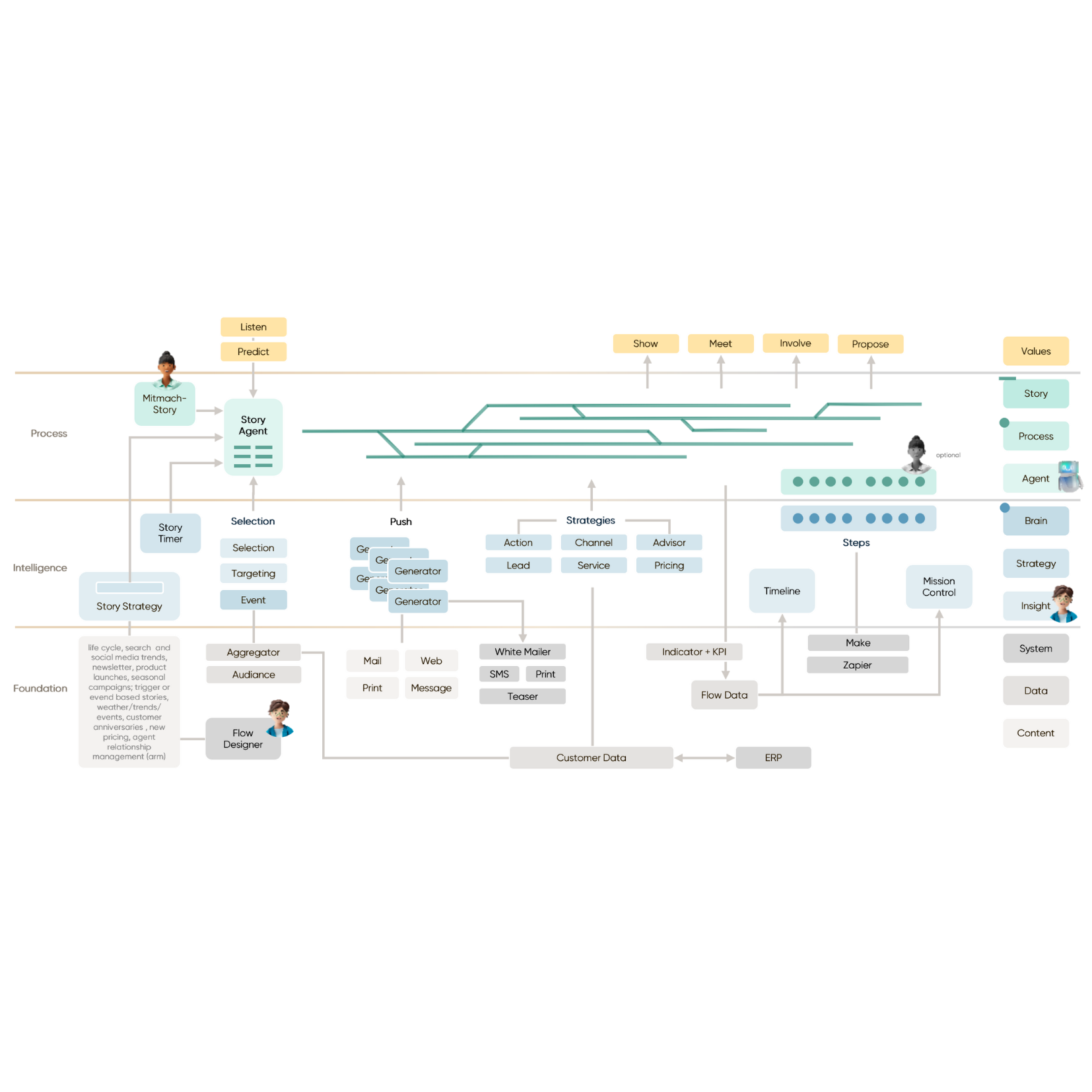- Decreased cost per lead (CPL)
- Increased ROI on marketing campaigns
- Higher relevance (CTR, open rate)
- Reduced marketing scatter losses
- Shorter sales cycles
Lena doesn’t want to be persuaded — she wants to be courted.
With Tell, you don’t speak in advertising messages but in stories that move people. This way, you don’t just create isolated marketing campaigns, but stories that touch, build trust, and lead Lena step by step into a deeper relationship with your brand.
This also means addressing not only Lena herself, but her surroundings — her family, and even her personal AI assistant. He, too, needs to know and appreciate you so that he can recommend the right things to Lena and easily connect her with you.


Tell from a CEO’s perspective
Many companies have excellent products — but no one hears about them. The reason: they fail to translate them into stories that are relevant to the customer. Tell is the bridge between product and market. It’s no longer enough to create personas or launch isolated campaigns. What matters is designing consistent, company-wide stories. This saves resources, prevents scatter losses, and ensures that every message lands where it has the greatest impact — with Lena and her AI assistant.
And this is only possible with Agent Relationship Management (ARM). Because Lena no longer hears our messages solely herself — her personal AI assistant filters, sorts, and decides what reaches her. For a story to succeed, we must actively engage with her agent as well — treating it as a new target audience, providing it with relevant, clearly structured information, understanding it as an independent recipient of our communication, and connecting it with our own AI agents. Those who master this don’t just reach Lena directly — they also secure the recommendation of her digital butler, gaining a decisive competitive edge.

